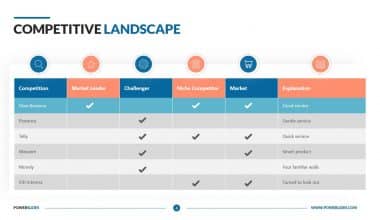Business financial forecasting methods are similar to those seen on a restaurant menu. There are numerous categories and possibilities available, and it all comes down to what you require and desire. Because your business is unique, you must carefully select the business forecasting method and strategies that will provide you with exactly what you need in the coming months. We are going to look at the two broad forecasting methods: quantitative and qualitative forecasting.
What are Forecasting Methods?
Forecasting is the process of determining the size of uncertain future events and producing varied conclusions based on various assumptions. Not all methods will fulfill the objective of forecasting; decision-makers should grasp which type is most suited to the business.
Businesses have several alternatives when it comes to selecting a financial forecasting model that provides precise, dependable data to drive strategic decision-making. You can select between simple forecasting methods and advanced methods that necessitate the use of business software to account for all of the variables being addressed.
Each strategy has advantages and disadvantages. Hence, organizations must select the forecasting method that best meets their objectives and goals when anticipating future finances.
It is critical to remember that no financial projection is perfect. Because your business is attempting to create future forecasts based on information and insights from the past, there is always a margin for error. This is regardless of how rigorous a forecasting method you use. Instead, organizations are looking for a forecasting strategy that can help frame and guide financial decisions such as budgeting and hiring.
Types of Forecasting Methods
Forecasting methods are often classified into two types: qualitative forecasting and quantitative forecasting. Here’s an overview of each school of thinking, as well as some of the most popular forecasting methods utilized by organizations today.
#1. Quantitative Forecasting Methods
Quantitative financial forecasting methods employ a straightforward approach to creating forecasts based on hard facts. Typically, quantitative forecasting is more effective when dealing with data points such as future sales growth and tax topics. This is opposed to the subject matter with less precise evidence to drive these forecasts.
Although the quantitative forecasting method removes the guesswork from the process, it can be hampered by a lack of human skill. This can result in a lack of essential context that could drastically affect forecasts. Nonetheless, it is a useful tool in a variety of business circumstances, particularly when your previous business data is a credible source for estimating future results.
The following are some of the most popular quantitative forecasting methods that businesses utilize.
#1. Straight Line
A straight-line forecasting method is one of the simplest to execute, involving only basic math and generating fair forecasts for what firms might expect in future financial scenarios. Straight-line forecasting is typically employed when a business anticipates future revenue growth.
Your business might utilize its previous sales growth rate as a benchmark for future growth. If revenues have grown by an average of 7% over the last three years, for example, you could use the straight-line method to forecast a similar growth rate over the next 3-5 years.
Of course, numerous factors will influence not only your revenue growth but also your net profitability over that time period. However, this strategy can still be useful when it comes to setting financial objectives and budgets. It can also be used in making plans based on where you expect your firm to be.
#2. Moving Average
A moving average is the average performance of a specified statistic over a given time period. A moving average is typically used to examine monthly time frames rather than yearly time spans. It is for assessing revenue, profitability, sales growth, stock prices, and other standard financial measures.
A moving average is useful for smoothing outperformance over time giving you a better picture of your company’s financial trends. If you work in a sector where sales and revenue change over time, a three- or five-month moving average can help you understand the peaks and troughs that occur from month to month.
#3. Time Series
Time series is an umbrella word that refers to a variety of methods for financial forecasting. The aim underlying this forecasting method is to find trends in previous data that will reoccur in the future, allowing data-driven forecasting across a variety of financial measures.
This is useful when performance has to be pretty consistent. Time-series forecasting, for example, can estimate performance in the coming month by using sales and revenue growth from previous months. If a direct translation of these trends to your business results isn’t correct, you might adopt a smoothing technique to time series forecasting. You use the averages of these numbers to reduce extremes and estimate a time-bound pattern for future performance.
In circumstances where seasonal or other changes may have an impact on forecasts, time series forecasting allows past data to be updated to account for these trends. Time series forecasting can account for peak sales and revenue in the fourth quarter of every year, for example, if you are a retailer.
#4. Linear Regression
A graphical representation of the relationship between two or more data points is a linear regression. It plots a trend line based on the relationship between the x and y variables.
As an example, consider sales and profits. If sales rise, earnings should rise as well, resulting in a linear regression with a positive connection between the two. However, if sales increase while profits decline, it may suggest other issues, such as rising expenses cutting into earnings—including, potentially, an increased cost per conversion that reduces the value of your company’s sales efforts.
This linear regression’s trend line can estimate future results. This allows for better budgeting and assisting business executives in making strategic decisions that increase business performance.
#2. Qualitative Forecasting Methods
Qualitative forecasting is an imprecise science. It employs soft data, such as expert estimates that cannot be supported by past data. When a CEO forecasts the costs a firm would incur as a result of new regulatory regulation, this is an example of qualitative data. Given their great expertise and insight, the expert may be correct in their prognosis. However, there is limited data available to back any prediction when such circumstances have never been experienced before.
In general, qualitative forecasting gets less reliable as it attempts to predict further into the future. However, qualitative forecasting remains popular and effective in short-term conditions.
Here are the two most popular qualitative forecasting models:
#1. Market Research
Market research is frequently utilized in the business world to examine probable scenarios that a company has never experienced before. One well-known example is when a business decides where to open a new location or when it tests the marketing and packaging for a new product.
Market research generates data for creating financial forecasts. However, there are many factors and unstable circumstances that make it difficult to rely on the quality of this data. In general, the more data acquired through market research, the more reliable the data. However, gathering market research is time-consuming and expensive, and even the most significant investment in this process will not guarantee that minor research biases, discrepancies in data collection, or other uncontrollable variables will not skew your conclusions.
#2. Delphi method
The Delphi methods of financial forecasting, like market research, gather data from specialists who are knowledgeable about the topics under consideration. Your organization will seek outside sources, as well as in-house expert insight, to assemble data via surveys that may be used to find consensus viewpoints on a variety of financial issues.
This can be a useful tool for qualitative long-term forecasting, such as discussing the growth of a specific industry or market or attempting to anticipate the worth of real estate assets as the market evolves over the next few years.
Financial forecasting is critical in your company’s planning, budgeting, and many other financial tasks. Whether you’re managing financial reserves, establishing marketing budgets for the coming year, managing employee payrolls, or exploring new business prospects, the forecasting methods you use will have a direct impact on the decisions you make in each of those operations.
Conclusion
Forecasting enables a business to take the necessary steps to attain a specific objective by providing crucial knowledge about future events, including their incidence and size. Forecasting can be qualitative or quantitative, depending on the information gathered and its nature, which is usually subjective or objective. Hence, it’s dependent on mathematical calculations or no mathematical calculations at all.
According to the business, management decides on the best forecasting approach to apply. It is dependent on internal and external elements and whether or not the external factors are controllable. Government regulations, competitive strategies, natural disasters, and other uncontrollable circumstances can all be examples of uncontrollable factors.
Quantitative forecasting depends on historical data to back up its findings and employs mathematical models to arrive at forecasting predictions. Emotions, intuition, past experiences, and values are all used in qualitative forecasting. It is a critical business technique that improves business operations and ensures that functions can be carried out successfully in an ever-changing business environment.
Forecasting Methods FAQ’s
What is the most accurate forecasting method?
The weighted moving average is the most accurate of the four options because specific weights can be assigned based on their importance.
Why is forecasting generally wrong?
Forecasts are frequently wrong due to personal bias, mathematical algorithms, or erroneous historical data.
What is forecasting in HR?
HR forecasting is the process of projecting demand and supply—whether it’s the number of people or the sorts of talents required and available to do the job.
Related Articles
- FORECASTING MODELS: Types and Detailed Guide to the Models
- Business Forecasting Definition, Methods, Examples, Types (Updated)
- Sales Forecasting Software: 15+ Best 2021 Options(+ Free Tips)
- Risk Analysis: Methods, Types, Process, Examples, Pros & Cons
- What is Sales Forecasting? Methods and Real-world Examples






